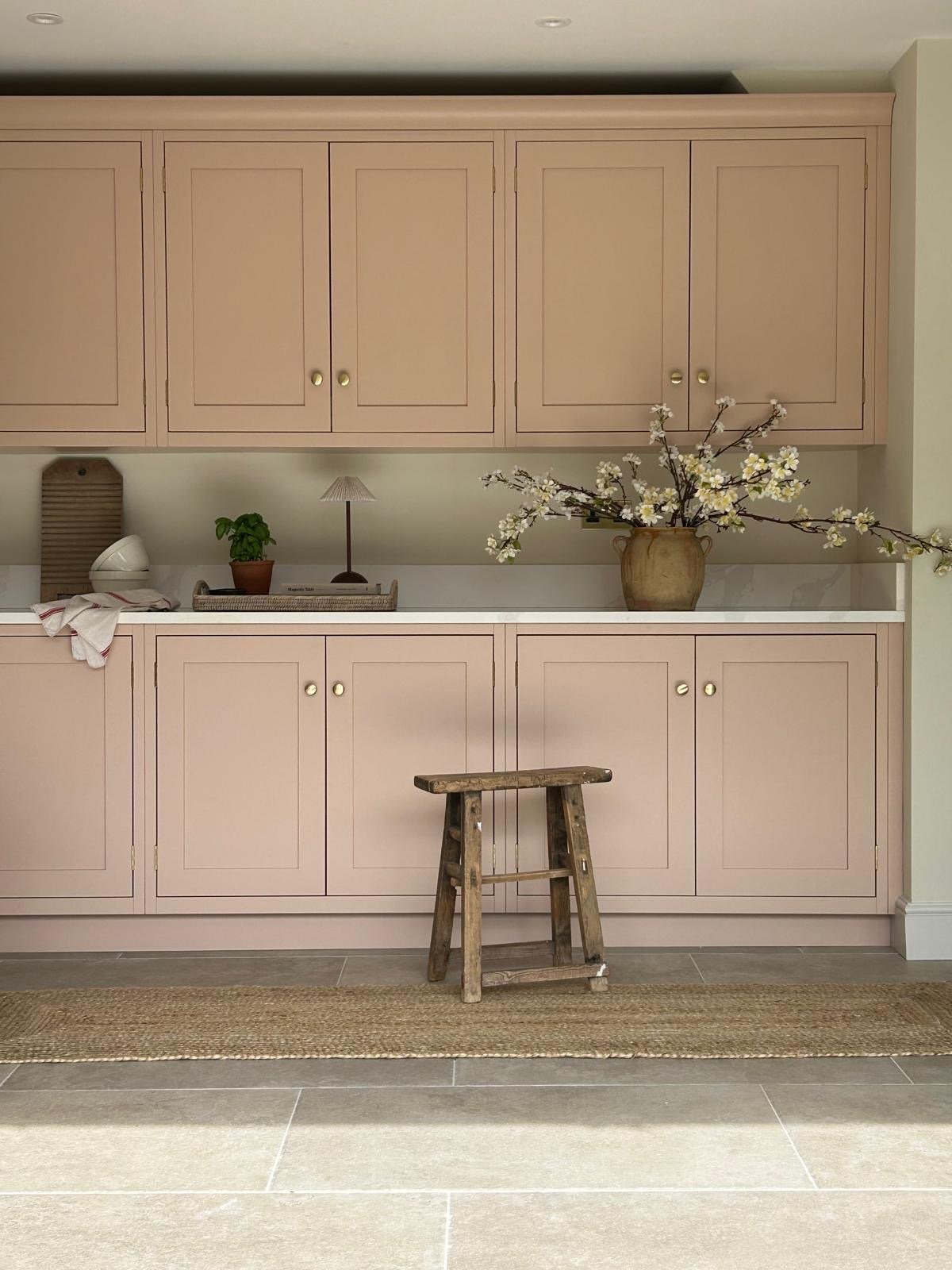Choosing kitchen flooring
Choosing the right flooring is so important - the kitchen above features a beautiful Dijon limestone.
When it comes to your kitchen floor there is so much choice, and this is a great opportunity to provide a real wow factor and complement your overall kitchen colour scheme. However, one thing remains certain, with kitchens being such a high traffic area - it needs to be hardwearing. There are so many choices now from stone to porcelain, tiles, laminate, engineered wood and even concrete. It’s largely dictated by personal choice, but practicality is important too.
Stone
Stone is a natural product which is appealing to many, but it needs sealing both when laid and at intervals thereafter. You should also consider that any grouting can stain with time and use.
Porcelain
Porcelain is man-made, hard-wearing and non-porous, and it benefits from a huge range of styles, patterns and sizes. Like stone, the grouting can become stained, but you can use a grout protector or choose a darker grout that will show up the marks less. Sadly, porcelain will chip if heavy items are dropped on it - so there’s that to keep in mind. Both stone and porcelain are very cold without under floor heating.
Tiles
Tiles are having a serious style moment – the choice is endless. From terracotta to terrazzo adding this flooring option is both stylish and durable. The hardest part is choosing the design. Some of our favourites are Ca Pietra, Mandarin Stone and Otto Tiles. We also love the Tile Boutique in Farnham – they have so many different designs and really know their stuff so are great for practical advice.
Laminate
There is a huge range of laminate choices and better quality ones look very realistic, with the print pattern following the ridges. It’s very hard-wearing and easy to clean (though it can still scratch!) It is often laid as a floating floor i.e. not stuck down, which is quick to lay and a bit more forgiving than vinyl if the subfloor isn’t perfectly level.
Chisholm Design showroom
Engineered wood
This is a layer of natural wood, bonded to an engineered wood layer. It’s more stable than solid wood, but still liable to stain and mark in kitchens and high traffic areas. It can be sanded a limited number of times to refresh it. It’s not really recommended for kitchens, utility or boot rooms, but great for living rooms or other areas where it is less likely to stain.
Polished concrete - this is a very contemporary option, and though it’s expensive, we think it looks absolutely amazing! Just think about the look you’re striving for - it’s a very contemporary style and you may want to soften this with rugs or with other materials in the room e.g. wood, to bring warmth to the overall look and feel. Just check, too, about how it’s going to be sealed as you’ll need to make sure it’s as impermeable as possible to avoid staining.
Patterns and colours
There are a lot of colour (and pattern) choices to consider! You’ll need to consider the colour(s) of cabinetry, worktop, walls and other woodwork, plus splashback and soft furnishings. We would recommend starting by looking at just four elements: cabinetry, worktops, walls and flooring. Look at them together, ideally in different lighting conditions and in the plane in which these will tend to be.
Top tile tip: Choose larger format tiles for bigger areas, square tiles for a more contemporary look, and tumbled/rectangular ones for a more traditional look.
Finally, when considering colours/patterns for utility and boot rooms, this might be the opportunity to go bold - you won’t regret it!





